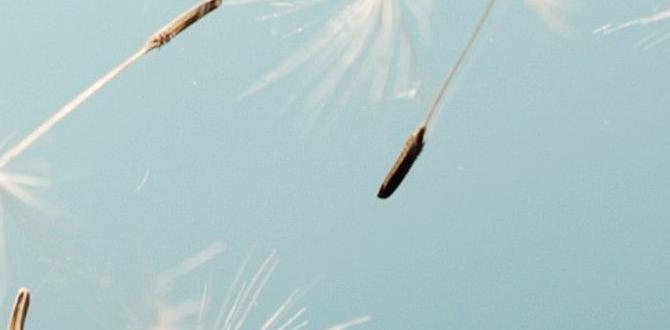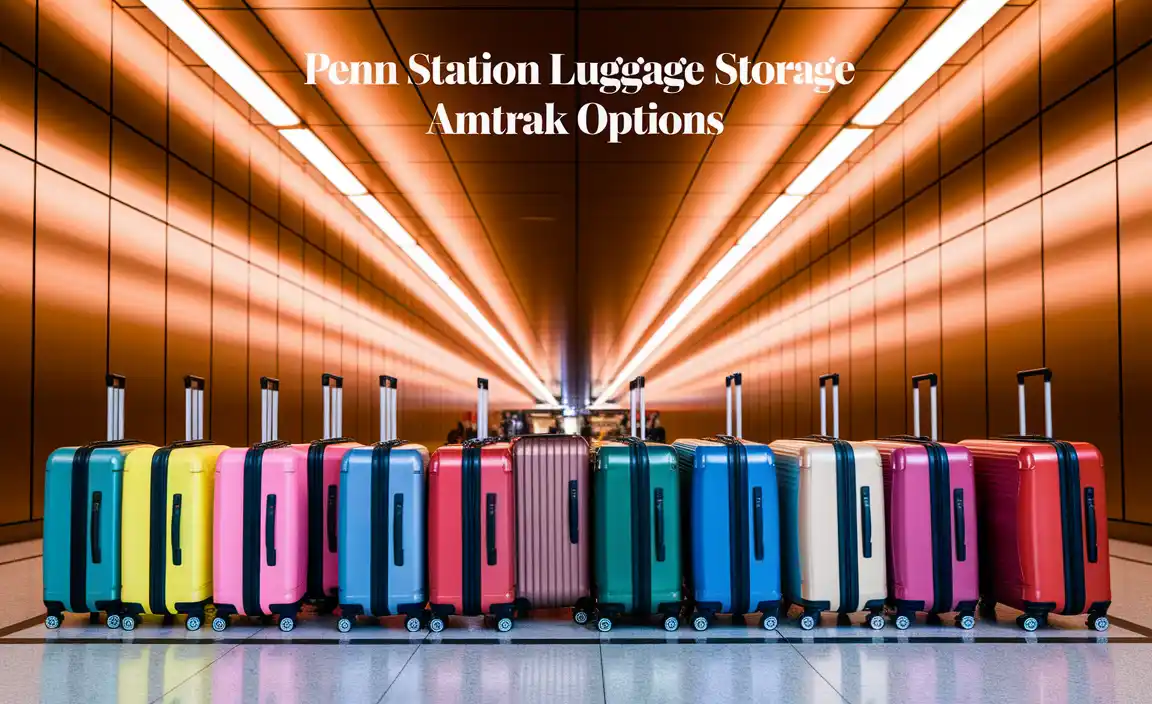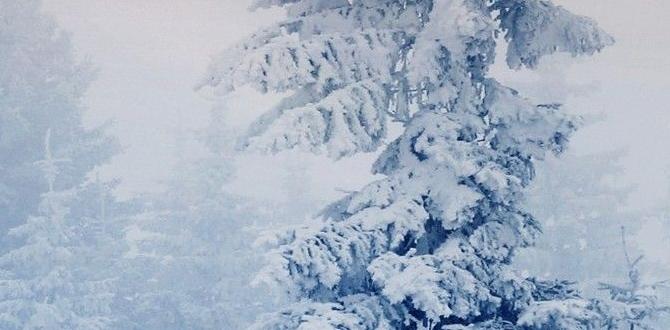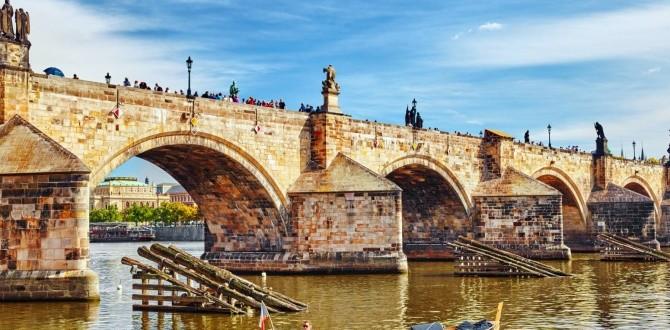Planning a Banff one-week itinerary is simple with this guide! Discover the best activities, sights, and practical tips for an unforgettable trip through the Canadian Rockies, balancing iconic experiences with hidden gems for a stress-free adventure.
Dreaming of Banff but feeling overwhelmed by all the options? We get it! Planning the perfect week in this stunning national park can feel like a lot. But don’t worry, we’re here to make it easy. This guide will walk you through a balanced, achievable Banff one-week itinerary. You’ll see the must-visit spots and discover a few local favorites. Get ready for breathtaking views, clear turquoise lakes, and unforgettable memories! Let’s start planning your adventure.
Your Essential Banff One Week Itinerary: A Day-by-Day Plan
This itinerary is designed to give you a taste of everything Banff has to offer, from majestic mountain vistas to serene lake strolls. It’s flexible, allowing you to adjust based on your pace and interests. We’ve also included practical tips to ensure your trip is as smooth as possible.
Day 1: Arrival in Banff & Town Exploration
Welcome to Banff! Settle into your accommodation and then take some time to explore the charming townsite. Wander along Banff Avenue, pop into the unique shops, and soak in the mountain atmosphere. For a gentle introduction to the area, take a leisurely stroll along the Bow River.
Must-do:
- Check into your hotel or Airbnb.
- Stroll down Banff Avenue for souvenir shopping and local goods.
- Visit the Whyte Museum of the Canadian Rockies to learn about the region’s history and art.
- Enjoy dinner at a local restaurant.
Traveler Tip: If you have any travel anxieties, especially with essential personal care items, packing discreetly is key. Consider a small, easily accessible bag for items you might need during transit or while exploring the town. For longer trips, discreet travel-diapers for adults or children can offer peace of mind, allowing you to focus on the experience, not the logistics.
Day 2: Iconic Lakes: Louise & Moraine
Today is all about the world-famous Lake Louise and Moraine Lake. These turquoise gems surrounded by snow-capped peaks are postcard-perfect. Due to high demand and parking restrictions, plan your visit carefully.
Morning: Lake Louise
- Arrive early! Parking fills up extremely fast. Consider the Parks Canada shuttle or Roam Public Transit.
- Walk along the lakeshore.
- Optional: Rent a canoe for a truly iconic experience (book in advance!).
- Hike to the Lake Agnes Tea House for stunning views and a well-deserved treat. It’s a moderately challenging hike, but worth the effort.
Afternoon: Moraine Lake
- Access to Moraine Lake Road is often restricted to shuttles or specific tour operators. Check Parks Canada Banff for the latest access information.
- The Rockpile offers the most famous viewpoint – an easy climb with an incredible reward.
- Wander along the lakeshore.
Evening: Return to Banff town. Enjoy a relaxed dinner after a day of breathtaking scenery.
Day 3: Banff Gondola & Sulphur Mountain
Experience panoramic views without the strenuous hike! The Banff Gondola takes you to the summit of Sulphur Mountain, offering 360-degree vistas of six mountain ranges, the Bow Valley, and the town of Banff.
Morning: Gondola Ride
- Purchase your gondola tickets online in advance to save time.
- Enjoy the scenic ride up.
- Explore the interpretive boardwalk to Sanson’s Peak.
- Visit the historic Cosmic Ray Station.
Afternoon: Banff Upper Hot Springs
- After descending Sulphur Mountain, relax at the Banff Upper Hot Springs. It’s the perfect spot to soothe muscles after days of exploring.
- Alternatively, consider a gentle hike like the Hoodoos Viewpoint trail for different perspectives.
Evening: Explore more of Banff town, perhaps catching a live performance or enjoying a craft beer at a local brewery.
Day 4: Johnston Canyon & Ink Pots
Johnston Canyon offers a unique hiking experience with catwalks bolted to canyon walls, leading to stunning waterfalls. It’s accessible for most fitness levels.
Morning: Lower & Upper Falls
- The walk to the Lower Falls is paved and very easy (about 1.1 km one way).
- Continue to the Upper Falls (another 1.7 km) for a more impressive sight.
- The trail can be busy; visit early or late in the day for a quieter experience.
Afternoon: Ink Pots Hike
- For those looking for a bit more adventure, continue past the Upper Falls to the Ink Pots (an additional 2.3 km one way).
- These unique, naturally colored mineral springs are a beautiful reward.
- The trail becomes more rugged beyond the Upper Falls.
Traveler Note: Carry a small, accessible bag with essentials. If you need to manage continence needs discreetly, having adult diapers or child diapers readily available is crucial for peace of mind, especially on longer hikes or in public spaces. This allows you to fully immerse yourself in the natural beauty without worry.
Day 5: Icefields Parkway Scenic Drive (Part 1)
Today, embark on one of the most scenic drives in the world: the Icefields Parkway, heading towards Jasper. You don’t need to go all the way to Jasper; focus on the incredible stops between Banff and the Columbia Icefield.
Key Stops:
- Bow Lake: Stunning views of Crowfoot Glacier and a reflection of the surrounding mountains.
- Peyto Lake Viewpoint: A short walk from the parking lot leads to the iconic viewpoint of Peyto Lake, shaped like a wolf’s head.
- Mistaya Canyon: A short, easy hike to a narrow slot canyon carved by water.
Afternoon: Columbia Icefield Discovery Centre
- Arrive at the Columbia Icefield Discovery Centre.
- Consider the Athabasca Glacier Ice Explorer tour, where you can walk on the ancient glacier.
- Walk along the Glacier Skywalk for breathtaking views over the valley. (Book tours in advance!)
Evening: Return to Banff. The drive itself is the highlight, so allow ample time for stops.
Day 6: Lake Minnewanka & Relaxation
Spend your penultimate day exploring the Lake Minnewanka area, Banff’s largest lake. It offers a different kind of beauty with opportunities for boat tours and hikes.
Morning: Lake Minnewanka Cruise
- Take a scenic boat cruise on Lake Minnewanka. Learn about the valley’s history and geology.
- Keep an eye out for wildlife like bighorn sheep and elk along the shore.
Afternoon: Two Jack Lake & Cascade Ponds
- Visit the picturesque Two Jack Lake, perfect for photos and a relaxed picnic.
- Enjoy a gentle stroll around Cascade Ponds.
Optional Activities:
- Hike to Johnston Canyon (if you missed it or want to do it again).
- Explore more of Banff town for last-minute souvenirs or enjoy a spa treatment.
- Consider a scenic drive up the Mount Norquay road for different town views.
Evening: Enjoy a farewell dinner at one of Banff’s renowned restaurants.
Day 7: Departure
Depending on your departure time, enjoy a final hearty breakfast in Banff. Perhaps take one last stroll along the Bow River or pick up some last-minute treats. Head to the airport or your next destination feeling refreshed and full of incredible memories.
Practical Tips for Your Banff One Week Itinerary
To ensure your trip is smooth and enjoyable, here are some essential tips. Packing smart, planning ahead, and being prepared for the mountain environment will make all the difference.
Getting Around Banff
Banff is best explored with a combination of methods:
- Car: Offers the most flexibility, especially for exploring the Icefields Parkway and lesser-known areas. However, parking in Banff town and at popular lakes can be extremely difficult and expensive.
- Parks Canada Shuttle & Roam Transit: These are excellent options for accessing popular spots like Lake Louise and Moraine Lake, especially during peak season when private vehicle access is restricted or parking is full. They reduce stress and environmental impact. Book shuttle tickets well in advance!
- Walking: Banff town is very walkable. Many trails also start directly from town or have easily accessible trailheads.
Pro Tip: Consider purchasing a Parks Canada Discovery Pass in advance if you plan to visit multiple national parks within a year. For a single visit to Banff, the daily pass is sufficient.
Accommodation in Banff
Banff offers a range of accommodation:
- Hotels: From luxury resorts to comfortable inns, Banff town has many options. Book well in advance, especially for summer and holiday periods.
- Hostels: For budget travelers, hostels offer affordable dormitory-style or private rooms.
- Vacation Rentals: Airbnb and similar platforms offer apartments and houses, which can be great for families or longer stays.
- Camping: Several campgrounds are available within and around Banff National Park, but they book up months in advance.
What to Pack
Mountain weather can be unpredictable. Layers are key!
Clothing:
- Waterproof and windproof outer jacket (essential).
- Warm fleece or down jacket.
- Moisture-wicking base layers (long-sleeved shirts, thermal underwear).
- Comfortable hiking pants or quick-dry trousers.
- T-shirts and a few casual outfits for town.
- Sturdy, broken-in hiking boots or shoes.
- Comfortable walking shoes for town.
- Hat, gloves, and scarf (even in summer, mornings and evenings can be cool).
Gear:
- Backpack for day trips.
- Reusable water bottle (stay hydrated!).
- Sunscreen, sunglasses, and a hat for sun protection (sun intensity is high at altitude).
- Insect repellent (especially for evenings and near water).
- Camera and extra batteries/memory cards.
- Small first-aid kit.
- Bear spray (highly recommended when hiking; know how to use it and carry it accessible). You can rent this in town.
For Comfort and Peace of Mind: Packing essential personal care items is crucial for any trip. For adults managing incontinence, discreet and highly absorbent adult diapers can provide confidence and comfort throughout a day of sightseeing. Similarly, parents traveling with children can ensure a stress-free experience by packing child diapers and related supplies, easily accessible in a day bag. This foresight eliminates potential anxieties, allowing everyone to fully enjoy the stunning Banff scenery.
Best Time to Visit Banff
Each season offers a unique experience:
| Season | Pros | Cons | Activities |
|---|---|---|---|
| Summer (June-August) | Warmest weather, all attractions accessible, vibrant wildflowers. | Most crowded, highest prices, requires booking far in advance. | Hiking, canoeing, scenic drives, wildlife viewing, photography. |
| Fall (September-October) | Fewer crowds, beautiful fall colors (especially larches), crisp air. | Weather can be unpredictable, snow possible at higher elevations, some services may close. | Hiking, photography, wildlife viewing (elk rutting season). |
| Winter (November-March) | Winter wonderland, skiing, ice skating, fewer crowds. | Very cold, many roads and trails may be closed, lakes are frozen. | Skiing, snowboarding, ice skating, snowshoeing, ice walks. |
| Spring (April-May) | Fewer crowds, potential for late snow and early wildflowers. | Unpredictable weather, many high-elevation trails still snow-covered, lakes may still be frozen. | Lower elevation hikes, wildlife spotting, enjoying Banff town. |
Banff National Park Entrance Fees
You need a Parks Canada Discovery Pass or a daily pass to enter Banff National Park. You can purchase these online in advance or at park gates. Review the latest fees on the Parks Canada website.
Tip: A Discovery Pass is usually more cost-effective if you plan to visit more than one Canadian national park within a year.
Frequently Asked Questions
Q1: How do I get from Calgary to Banff?
The most common way is by car, which takes about 1.5 to 2 hours. Renting a car at Calgary International Airport (YYC) and driving yourself is convenient. Alternatively, several shuttle services operate between Calgary Airport and Banff townsite, offering a stress-free option.
Q2: Is it possible to see the Northern Lights in Banff?
Yes, it’s possible, especially during the fall and winter months. Banff is an excellent location for aurora viewing due to its dark skies. The best chances are on clear, moonless nights, away from town lights. Popular spots include Lake Minnewanka and Bow Lake.
Q3: How much hiking is involved in this itinerary?
This itinerary balances iconic sights with moderate hiking. Day 2 involves gentle strolls at the lakes, with an optional moderate hike to Lake Agnes. Day 4 includes easy to moderate hikes in Johnston Canyon. Day 5 involves short walks at viewpoints. You can easily adjust the hiking intensity based on your fitness level and preference.
Q4: What if I need to manage personal care needs while traveling in Banff?
Banff is well-equipped for tourists, with public restrooms available at major attractions and in town. For adult travelers who may need adult diapers, packing discreetly in your day bag ensures easy access for comfort and confidence. Similarly, parents with young children should bring a supply of child diapers for outings. Planning ahead with these personal necessities makes for a much more relaxed and enjoyable trip, allowing you to focus on the adventure.
Q5: Do I need a car in Banff?
While a car offers the most flexibility, it’s not strictly necessary. Banff town is walkable. For accessing popular lakes and attractions, Parks Canada shuttles and Roam Public Transit are excellent, often more convenient, and environmentally friendly options, especially during peak season. If you plan extensive exploration of the Icefields Parkway or other remote areas, a car might be beneficial.
Q6: When is the best time to visit Banff to avoid crowds?
To avoid the largest crowds, consider visiting during the shoulder seasons: late spring (late May to early June) or early fall (September to mid-October). The weather can be more unpredictable during these times, but you’ll experience fewer people at popular spots and potentially lower accommodation prices.







